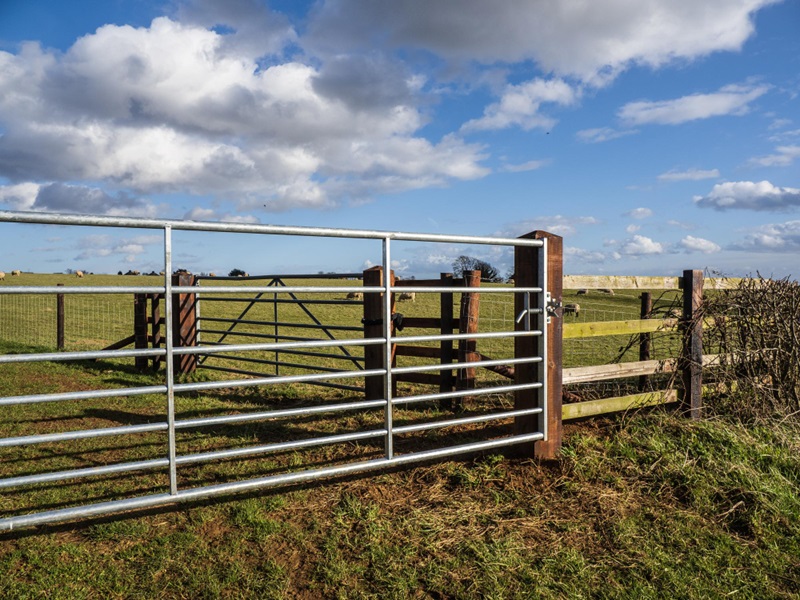 Building a cattle pen is more than just putting up fences. It’s about creating a space that’s safe, efficient, and works for both you and your animals. From picking the right spot to understanding your herd’s unique needs, every choice matters. And when it comes to the details, like choosing the right metal farm gates, those decisions can make or break your daily operations. Let’s understand how to build a cattle pen that’s not just functional but a real asset to your farm, starting with the often overlooked but crucial component.
Building a cattle pen is more than just putting up fences. It’s about creating a space that’s safe, efficient, and works for both you and your animals. From picking the right spot to understanding your herd’s unique needs, every choice matters. And when it comes to the details, like choosing the right metal farm gates, those decisions can make or break your daily operations. Let’s understand how to build a cattle pen that’s not just functional but a real asset to your farm, starting with the often overlooked but crucial component.
Crucial Factors You Must Follow When Designing Cattle Pen
Location:
- Strategic Placement: The location of your cattle pen significantly impacts its functionality. Choose a spot that optimizes efficiency and ease of use.
- Existing Structures: Decide whether you’ll repurpose old pens or construct new ones from scratch.
- Pen Purpose: Determine if the pen will be used for working cattle at your main facility or for gathering them in the pasture.
- Pasture Pens: If it’s a pasture pen, place it near the road gate for easy access by trucks.
Ideal Terrain: If you have flexibility in choosing a location, consider building the pen on a slight uphill slope. Cattle are more inclined to move uphill into a pen than downhill.
Metal Farm Gates: Incorporate sturdy metal farm gates into your pen design for durability and security. Choose gates that are easy to operate and provide secure containment for your cattle.
Additional Considerations:
- Drainage: Ensure proper drainage to prevent water accumulation in the pen.
- Size: Design the pen size to accommodate the number of cattle you intend to handle.
- Materials: Select durable materials for the pen’s construction, such as metal panels or wooden posts and rails.
- Safety: Prioritize safety features in your pen design to protect both cattle and handlers.
Defining Your Cattle Pen’s Purpose
Pen purpose: Processing/vaccination or gathering/holding?
Cattle types: Cows/calves, yearlings, bulls, or multipurpose?
The sorting needs: Extensive sorting or basic holding?
Capacity: How many cattle will the pen hold?
Space per head: Determine the required square footage per head. Consider holding duration (daily or overnight).
Gate selection: Incorporate sturdy, easy-to-operate metal farm gates.
Cattle Pen Design Considerations
Pen Configuration: Determine the optimal number and arrangement of sorting/holding pens.
Alleyway Design: Plan the dimensions (length and width) of your alleyway. Consider how pens will connect for seamless cattle flow.
Gate Placement: Sketch a rough layout to estimate the number of metal farm gates required. Having extra gates is preferable to a shortage.
Cattle Flow: Visualize the movement of cattle entering through a gate, passing through the alley and chute, and then exiting to another pen or returning to the original one.
Cattle Temperament: Consider the type of cattle you’ll be working with (mild or energetic). Choose fence heights and materials accordingly.
Fence Options: Some cattle may require 6′ or taller fences with pipe top-rails. A standard 5′ tall metal fence can still be effective.
Leveling Ground for Cattle Pens & Metal Farm Gates
- Importance of Level Ground: Ensures the top rail of your fence is level, preventing gaps under the fence that need filling.
- Impact on Gates: Level ground allows metal farm gates to swing properly and look consistent with the rest of the fencing.
- Prevents Erosion: Sloping ground leads to erosion and ruts in the cattle pen.
- Recommendation: Always level and prepare the ground before building your cattle pen.
Enhance Your Cattle Handling
Don’t settle for just any cattle pen. Design a handling system that optimizes workflow and keeps your herd safe. Start by choosing the right metal farm gates from International Pipe. Our gates are built tough to handle everyday use and keep your animals securely contained.
